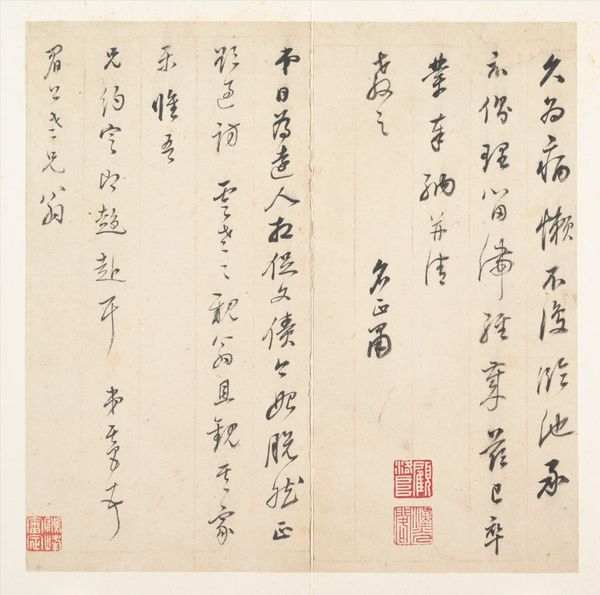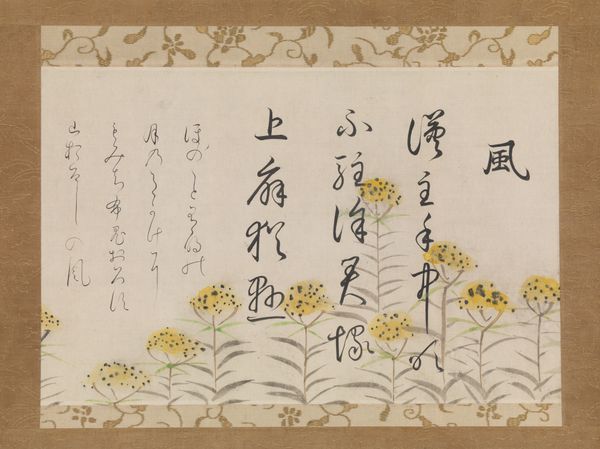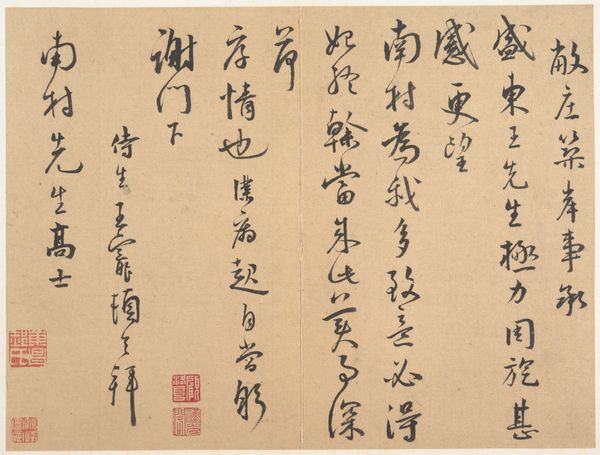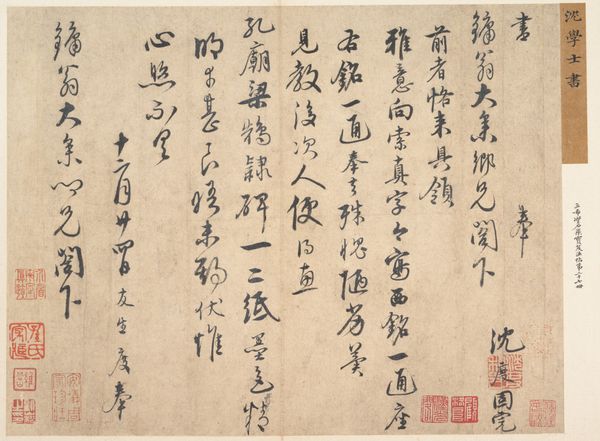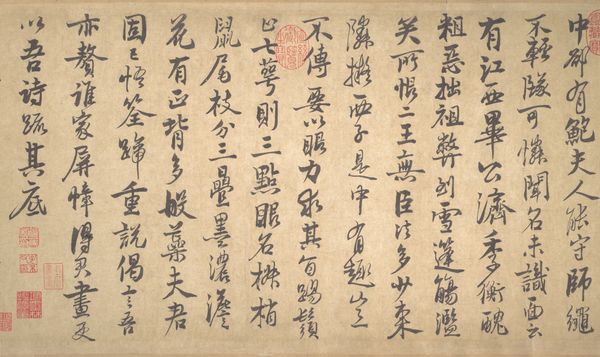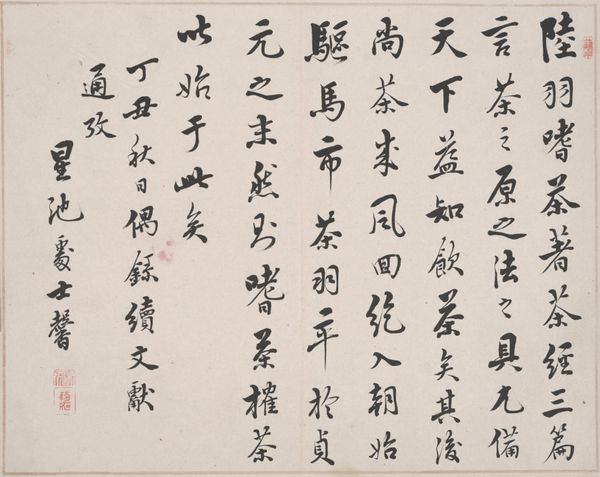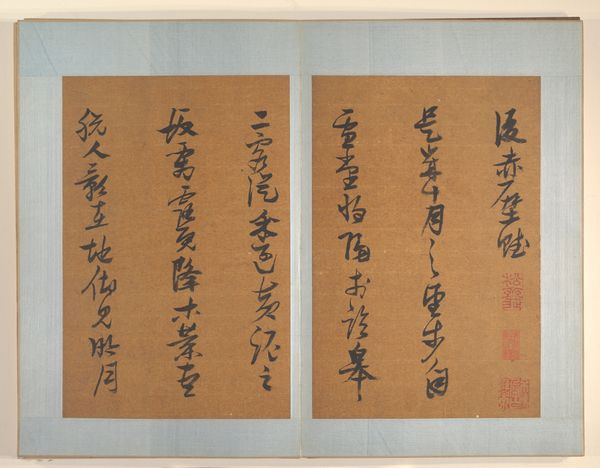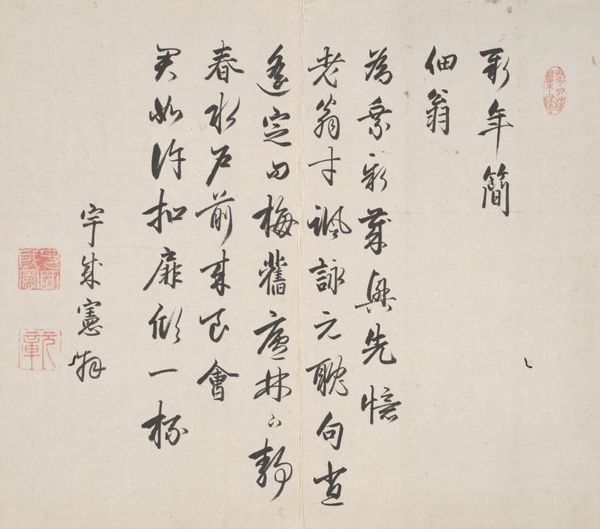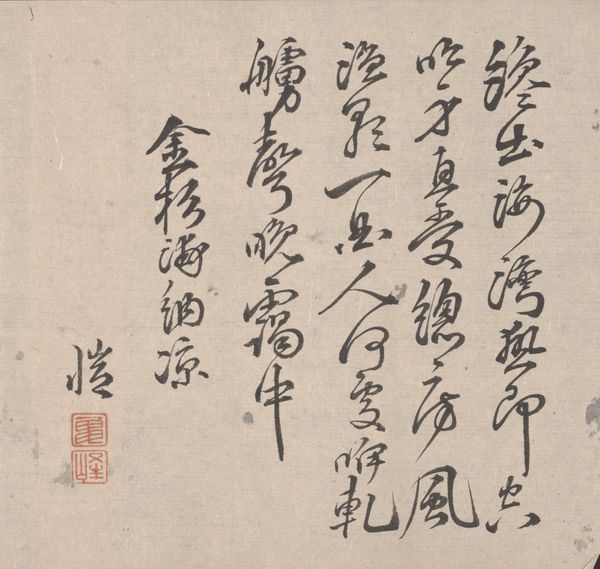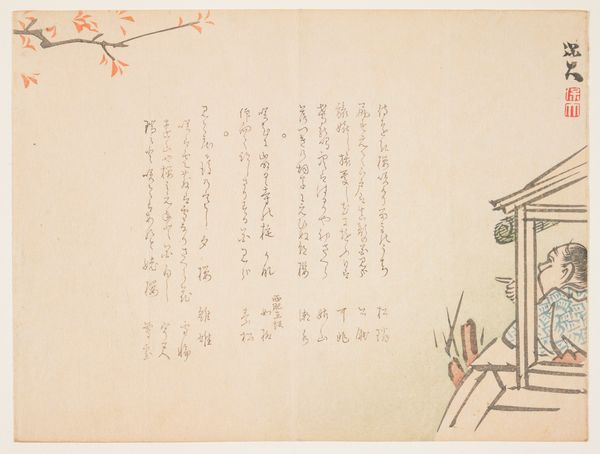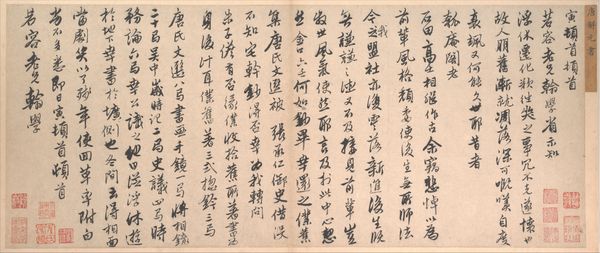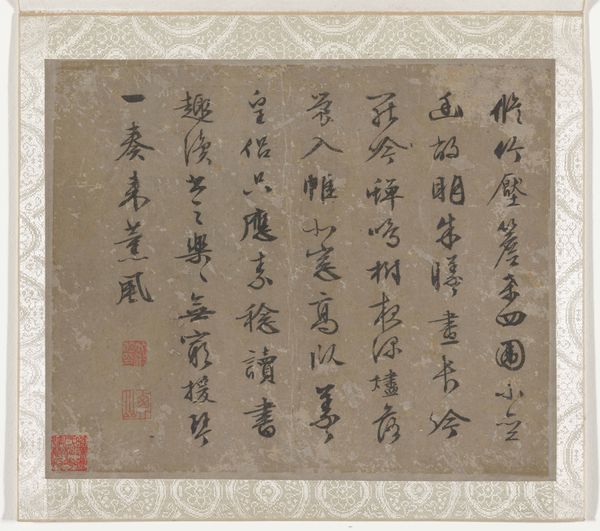
Index Page, prints .1-.50 (Vol.1), from the series "Pictures of No Performances (Nogaku Zue)" 1898
0:00
0:00
#
toned paper
#
water colours
#
pastel soft colours
# print
#
asian-art
#
japan
#
handmade artwork painting
#
coloured pencil
#
coffee painting
#
watercolour bleed
#
watercolour illustration
#
botanical art
#
watercolor
Dimensions: Approx. 25.2 × 37.4 cm (10 × 14 4/3 in.)
Copyright: Public Domain
Editor: So, this is "Index Page, prints .1-.50 (Vol.1), from the series "Pictures of No Performances (Nogaku Zue)" created in 1898 by Tsukioka Kōgyo. It's a print held at the Art Institute of Chicago. It has such a delicate, ethereal quality. The combination of text and subtle imagery is really striking, but also kind of perplexing to me. How do you interpret this work, especially in the context of "No Performances?" Curator: It’s interesting that you find it perplexing! Indeed, it presents an image of stillness. Nogaku, or Noh drama, relies heavily on symbolism and cultural memory. Consider this “Index Page” not just as a table of contents, but as an invocation. The calligraphy itself functions as a visual echo of the performances it represents, a kind of dance in ink. Editor: A dance in ink, that’s lovely! So, even though the series is called "Pictures of No Performances," it's still very much connected to the art form itself? Curator: Precisely. Think of the crane, for instance, partially obscured yet still present. The crane is a symbol of longevity and good fortune in Japanese culture, often appearing in Noh plays. By including it, Kōgyo nods to the symbolic weight and performance traditions surrounding Noh. Consider the colors; they appear like dreams half-remembered. Editor: It’s as if he's hinting at the essence of the plays, more than trying to depict them literally. Does the style connect with that idea too? Curator: Absolutely. The choice of soft, pastel colors, the delicate linework, and the inclusion of botanical motifs speak to a refined aesthetic deeply embedded in Japanese cultural traditions, much like the stories and gestures of Noh drama are deeply embedded in the culture itself. This echoes long and meaningful stories. The image is more of a visual haiku. Editor: That helps so much! I was too focused on the 'no performance' aspect to see all the layers of symbolic language woven in. Curator: Art is often about what's implied, not always what's explicitly shown. And cultural memory breathes life into seemingly simple imagery.
Comments
No comments
Be the first to comment and join the conversation on the ultimate creative platform.
